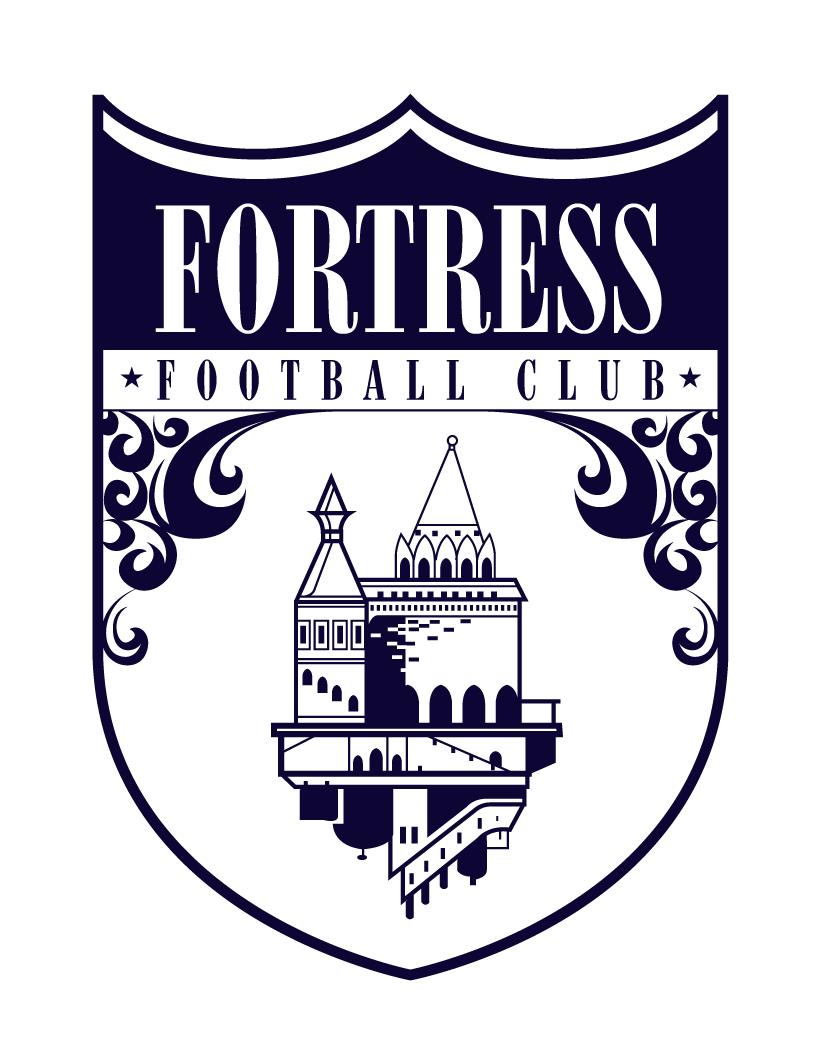Tactical Analysis 2 - Wide Play
“The intention is not to move the ball, but move the opponent. That is to say, I take the ball here so my opponent comes because in the exact moment they come, I pass it. I pass it and progress. This is one of the keys: move the opponent where you want. Football and every team sport is played on the right and finishes on the left. Play on the left, pass behind, and play on the right.” - Pep Guardiola
It’s important we learn to use our outside players and not just jam the ball up the middle of the field. Last week’s game proved this, as the opposition pressed their defensive lines high and bunched players throughout the middle of the field:
There are no open lanes up the middle of the field. They’re blocked. Instead, the open lanes are on the outside, where our wingers are (numbers 2 and 3). In the above instance, this is where we want our wingers. If our wingers get caught in, well...it looks like this:
Our buildup fails. Our counterattack fails. And we look like we’re playing U8 rec soccer. What happens when we find our wingers on the outside of the field? What happens when they trap the ball with their back foot and turn their hips towards the majority of the field?
The defense must shift to cover the threat on the open wing. It’s not just one player having to recover, but the entire team.
Our opponents sent two men to cover the ball. This means we should have someone, if not multiple people open on the field. The danger of getting the ball stolen if we dribble here is high. We must look for the open man. Our left center back, 4, is wide open. What happens if we anticipate the double team and get the ball back to 4?
4 receives the ball with his back foot and has two defenders coming at him at full speed. He should have made his mind up about where he’s going with the ball before the ball even gets to him. He has FOUR options on the field in the pivota, 6, goalkeeper, 1, right center back, 5, and the right winger, 2. The latter is the hardest to get to and we’d rather opt for a pass on the ground. So, 4 decides to go to 6 for the split. 6 will have 5 still open, and 5 gets the ball to 2 quickly. Now, the defense has had to shift everyone twice in a big way.
2 advances the ball up the field because he is wide open and opts to dribble into space. We have THREE easily identifiable options which give us scoring opportunities. Think back to the Pep quote above. We must move the ball from right to left not to play a flashy style but to MOVE OUR OPPONENT. When we continually move our opponent, they are bound to disorganize. At our age group, it happens through switching the field (moving the ball from left to right) ONCE. Then, we can take advantage. This is why we practice rondos and positional play games, to understand how to play in tight pressure so we may release the ball to the open man who has time to push the ball forward and exploit the defensive disorganization.
On offense, wingers (our numbers 2 and 3) must immediately open wide to create space for everyone on the field and stretch out the defense. The opposition can afford to leave our wingers alone if they feel they’re not a threat. But after we exploit them just once in a game, they will have to be aware and cover them in some way.
We go up against a 3-2-3 system often, which won’t translate to an 11v11 game next year (a point for another day). This means the opposition has 3 defenders, 2 inside midfielders, and 3 forwards. In this system, our opponents will have to have one of their wingers cover our 2 or 3, one of their inside midfielders, or one of their outside backs. I have not seen us play in a game yet where the opposing team sends the same person to cover our winger. It’s always different, always whichever of the three above are closest. This, we should take advantage of.
As for defense, the wingers must drop back like wingbacks and help our center backs. This means if the ball is on the opposite side, the wingback must tuck in towards the center to help defend against an attack through the half space. If we divided the field into five columns going up and down the field, the half spaces are the right middle and left middle areas:
Depending on whether you’re the left or right wingback, you’d cover your left or right half space.
This week, we’ll continue our practice on wing play. This will involve rondos, positional play, and short-sided games which emphasize moving and maintaining the ball in these spaces. We’ll also learn how to look up and see if we need to attack the space given us on the wing, or if we need to pass the ball back and recycle it to the other side. We’ll practice a couple technical drills for the wingers to help them understand how to lose their man and get out wide quickly, trapping with their back foot, positioning their body so they can see the greatest amount of field space, and whether to dribble into space or pass to an open teammate.
Ball Mastery - Skills to develop at home - 15 minutes
Trapping, outside of the foot - 5 minutes
Trapping, inside of the foot - 5 minutes
Outside, outside, inside- 5 minutes
See you tonight.







